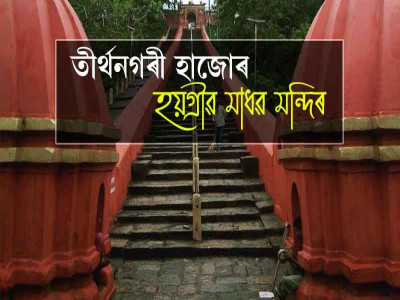
The rise and fall of the Kachari Kingdom
The rise and fall of the Kachari Kingdom
The Origin
Not much is known about the Kachari Kingdom before the arrival of the Ahoms. Many claims that the Kachari Kingdom was established in the 9th century. When Sukapha established his kingdom in the 12th century, Kachari kingdom was said to have already extended along the southern banks of the Brahmaputra river, from Dikhow river in Sivasagar to the Kallang river in Nagaon and included the valley of Dhansiri and also the parts of the present-day Dima Hasao district. The Dikhow river was said to be the boundary between the Kachari kingdom and the Ahom Kingdom.
War with the Ahoms and retreat from Dimapur
The consolidation of the Ahom Kingdom saw growing hostilities with the Kachari Kingdom. The first clash between the Ahoms and the Kacharis took place in 1490 when the Ahoms were defeated. But during the reign of Ahom King Shungmung (1497-1539 AD) saw the expansion of the Ahom Kingdom in all directions and eventually the Kachari Kingdom was forced to leave the Brahmaputra Valley and their capital Dimapur. They shifted their new capital to Maibang after that. Hostilities continued between the two kingdoms, but the Kacharis were successful in maintaining their Independence till the advent of the British.
Transferring capital to Khaspur
The Kachari’s continued to rule from Maibang but slowly they had to shift their capital to Khaspur near Silchar. Khaspur was originally a part of the Tripura Kingdom, which was taken over by Chilarai of Koch Dynasty in the 16th century. Bhimasingha was the last Koch ruler of Khaspur who married his daughter Kanchani to Laxmichandra, prince of the Kachari Kingdom. Once king Bhimasingha died the Kachari kingdom migrated to Khaspur merging the two kingdoms together and establishing Khaspur as their capital for better administration of the newly acquired territory.
Trouble during the reign of Govind Chandra
As king Krishna Chandra died in 1813, the reign of power was in the hands of Govind Chandra, but soon he had to face many challenges. One was when the son of his servant name Tularam Senapati revolted against him and occupied the Northern part of his kingdom, particularly the hills. But, after that, worse was to follow when his territory in the plains was captured by 3 Manipuri princes who were driven out of Manipur by the Burmese in 1819 forcing Govind Chandra to flee to Sylhet. He then sought help from the British who declined his request and additionally appealed to the Burmese leading to the Burmese invasion of Cachar. Soon after, the British had to intervene by driving away the Burmese and declaring Cachar and Jaintia as British Protectorates, and made Govind Chandra the king of the plains of Cachar. However, the northern part of the kingdom i.e. the hills were unaffected both by the Burmese and by the British.
Events after the British Intervention
After the Anglo-Burmese war of 1824, the Raja Govind Chandra of Cachar was reinstated to the throne but he had to face many internal problems. Tularam who had acquired the Northern hills of Cachar before the Burmese war had again revolted against the Raja of Cachar. In 1829, the British Government had to intervene in this dispute between the two and presented a treaty to be signed between both of them. By the terms of the treaty, the Raja had to acknowledge Tularam’s authority over the North Cachar Hills. However, after the death or murder of the king of the plains of Cachar (Raja Govind Chandra Hasnu) on 24th April 1830, the British Government annexed the Cachar plains under the Doctrine of Lapse. The rest was ruled by the last Dimasa General Tularam. In 1837, a portion of Tularam’s kingdom was further annexed to the British Empire and constituted into a subdivision of the present-day Nagaon district. After the death of Tularam, the remaining portion of the Kachari Kingdom was also annexed. That was the climax of the once mighty Kachari Kingdom.
Ruins of Dimapur
The ruins of Dimapur are a testimony of how the Kachari Kingdom had attained a degree of civilization that was unmatched by any kingdom at that time and even the Ahoms. The former had shown expertise in brickwork (making structures out of brick) which was unknown to its contemporaries.
Disclaimer: The opinions expressed in this article are those of the author's. They do not purport to reflect the opinions or views of The Critical Script or its editor.

Newsletter!!!
Subscribe to our weekly Newsletter and stay tuned.

















Related Comments